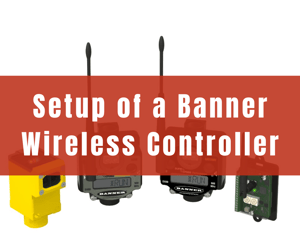-Aug-06-2023-08-53-46-1213-PM.png?width=300&name=Copy%20of%20ACD%20Image%20(21)-Aug-06-2023-08-53-46-1213-PM.png)
Wireless technology is a burgeoning and now nearly ubiquitous facet of a modern factory environment. Perhaps the most pivotal piece to a factory’s wireless network is its wireless controller. A wireless controller is the heart of the factory’s production, providing users the ability to communicate with various material handling systems such as overhead cranes, conveyor systems, and transfer cars just to name a few. This functionality streamlines production and allocates all the pertinent data and information into one place, greatly simplifying things for your business. With all this being said, the setup of a wireless controller can often be a daunting and complex task. Below, we’ll walk through a simplified version of how to set up your wireless controller and provide more details on how they can help your business cut costs, save money, and prosper in the long run.
Setup and Configuration
For the purposes of demonstrating the setup and configuration of a wireless controller, we will be assuming the user is implementing a Banner DXM. However, much of this is applicable to other brands of wireless controllers, so don’t worry if you’re not using the same model.
To start, the user should define the Protocol conversion for each local register to be EIP Originator → DXM or EIP DXM → Originator. Defining this as such will allow the host PLC (Originator) to transmit data to the DXM local register (DXM). The second option (EIP DXM → Originator) will conduct the inverse action, sending register data from the DXM to the host PLC. In order to import and export data to and from a PLC, the user must go to the Local Registers screen and select which register they wish to transact data from. On a Banner DXM, a maximum of 228 registers can be read or written. Finally, after making any alterations to the DXM configuration, the user must save the configuration files to a computer and then upload them to the DXM as there is no autosave function on the DXM.
For further, more explicit detail be sure to read the technical documents provided by the business that issued your wireless controller. These documents are excellent insights into the products and often provide the user with additional pertinent information.
Additional Uses
In addition to the uses listed above, a wireless controller enables end-to-end IIoT (Industrial Internet of Things) solutions. This gives your business the ability to wirelessly connect your sensors to the cloud platform, easily push data to the cloud where it can be logged for analysis, and instantly alert you should any corrective actions need to be taken. In this way, a wireless controller works to streamline workflow, removing the onus of compiling and analyzing large sets of data off of your employees and onto an automated system. Therefore, synching a wireless controller with IIoT can save your business time and capital.
Interested in learning more? Connect with an ACD expert!


